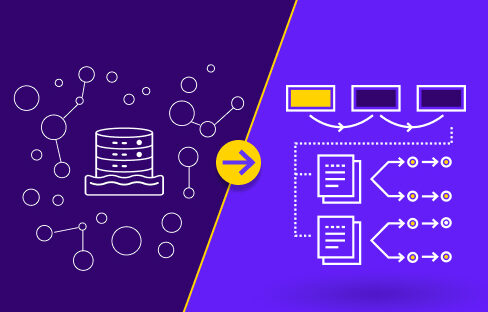The global cloud orchestration market was valued at $3.5 billion in 2016, and is projected to reach $13.6 billion by 2023, growing at a CAGR of 21.8% from 2017 to 2023.
North America was the highest market in the cloud orchestration industry in 2016, owing to the growth in demand for low-cost cloud infrastructure development and demand for optimized process automation by the enterprises.
Several industry verticals, such as healthcare, manufacturing, retail, and others, are adopting cloud orchestration solutions for better business orientation.
Asia-Pacific and Europe have witnessed adoption of cloud orchestration adoption, high adoption of Internet of Things (IoT) technology, and surge in demand for low-cost IT infrastructure deployment, which is anticipated to fuel the cloud orchestration market growth in the coming years.
Big Data is Big Business
Companies have realized the importance of strengthening their overall cloud orchestration solutions to ensure competence and effectiveness.
Business operations and process setup are key to succeed in making the most of Big Data. In a way, many organizations have the access to it but lack the resources and tools to process it effectively.
Big Data can’t be encapsulated into one single tool or process. In a way, it is the ability to handle, process and manage large amounts of data – and make sense of it.
The decision-making process or business, marketing, and product teams worldwide relies upon grasping the best possible understanding on what works best with their existing and potential customers.
There are many elements of Big Data management but these are the three pillars in which they rely upon. As the world of business embraces the cloud to store and manage their Big Data and its processing, these are three essentials to consider.
Big Data Aggregation & Big Data Ingestion Tools:
Data comes from many sources, whether these are internal (i.e. your own records, emails, product usage stats) or external (i.e. data from third-party platforms such as advertising).
Without the ability to aggregate and ingest all data from multiple sources into your cloud or repository there’s no value you can get from it. In addition, until all your data isn’t under one roof, you won’t be able to combine it and set up the KPIs your business needs.
Business Analytics / Big Data Analytics Companies:
Business analytics are an essential part of managing an organization. At the end of the day, data that doesn’t turn into actionable insights through the right analytics platform is wasted.
While there are thousands of big data analytics tools and companies, a big challenge is finding or creating one that really fits your business.
Platforms like Tableau or Looker are popular choices that on the one hand offer readily available dashboard templates while also giving more advanced customization capabilities for businesses that need something bespoke.
Another challenge is that almost every 3rd party platform comes with its own analytics package within it. For example, Google or Facebook Ads will provide you their own analytics, with KPIs that might not be as suited to your needs.
Integrating these into a master dashboard or analytics hub is another way to further enrich your centralized data hub.
Big Data Automation
Automation is not a luxury but a necessity when it comes to managing Big Data. A data analyst might be able to sift through a few hundreds rows of data but not through hundreds of thousands or millions.
In a way, automation is what differentiates Big Data. Without having processes in place it’d be virtually impossible to handle such large volumes of data. What’s more, as companies gear towards real-time insights and analytics, automation takes center stage.
What is the future of Big Data?
Big Data is still regarded as something ‘scary’, out of reach for most of us to comprehend or access. However, the future of Big Data will be about accessibility.
The ability to democratize data across organizations will determine its future. While this is greatly improving, a current report suggests that only 21% of the global workforce is confident in their data skills.
The future of big data analytics must focus on simpler tools and platforms, as well as a serious investment in education around data literacy.
It is the only way to help organizations, teams and individuals to embrace Big Data – and leverage it to its full potential.
Minimize the firefighting. Maximize ROI on pipelines.





